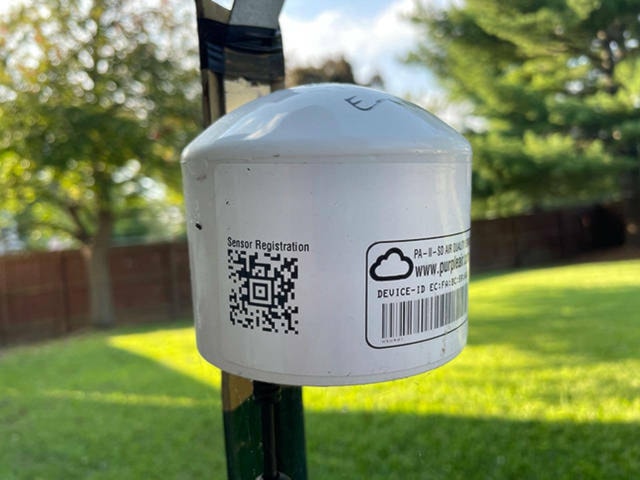Houston and area residents now have the ability to monitor the quality of the air they breathe, something that will help their overall health, says a local society.
And that comes from 13 air quality monitors now installed with their findings being published online, says Sue Brookes of the Bulkley Valley Lakes District Airshed Management Society.
High readings of very tiny particulate matter in the air, known as PM2.5, that can affect breathing and inflame other medical conditions can now be tracked.
“When levels are high on the sensor, or by sight, turn on those home air filters,” Brookes said.
“They really make a difference. If you close room doors and windows and use filters in the kids’ or grandparents’ rooms before bed, then at least they will have easier breathing over the night.”
The provincial environment ministry is providing four monitors, the District of Houston is paying for six, the Bulkley Valley Lakes District Air Management Society is providing two and the federal environment ministry is providing one monitor for a two-year period to study local air quality.
Because of its geography, weather patterns and the presence of industry, Houston regularly registers as an area of high particulate matter and that has been a matter of concern for the District and others for years.
Houston for several years now has ranked either at the top or near the top of B.C. municipalities for emissions of fine particulate matter which can come from various sources including wood smoke, large industries, dust and motor vehicles.
The problem is magnified because of where Houston is situated and accompanying atmospheric conditions so that on cold days, when wood burning increases, the air remains still so that smoke accumulates in the airshed.
That’s also brought on air quality advisories, warning people with breathing conditions to stay indoors.
The situation has been of concern to the District for several years as well and has factored in discussions with senior governments about what can be done.
Brookes said a snapshot of January 2023 one-day PM2 averages showed the air quality wasn’t great.
“In early February the air was clear of PM2.5 until about the 20th. This period shoud have provided people with some recovery time from their previous exposure to poor air,” she added.
Looking at quality by locations, Brooke said the air at Barrett is pretty clear while the highest PM2.5 readings are found in the downtown area.
Monitors are at several businesses, at the District of Houston firehall, the Houston Public Library and in residential areas. There’s also one at Barrett.
“It’s exciting that this is all open source data and available for anyone at any time,” Brookes said of the online readings.
“We are seeing kids do school projects, homeowners managing their own health and reacting quicker to reduce their personal exposure.”
That data can be viewed here: https://map.purpleair.com/1/mPM25/a1440/p604800/cC0#10.79/54.3917/-126.6794
